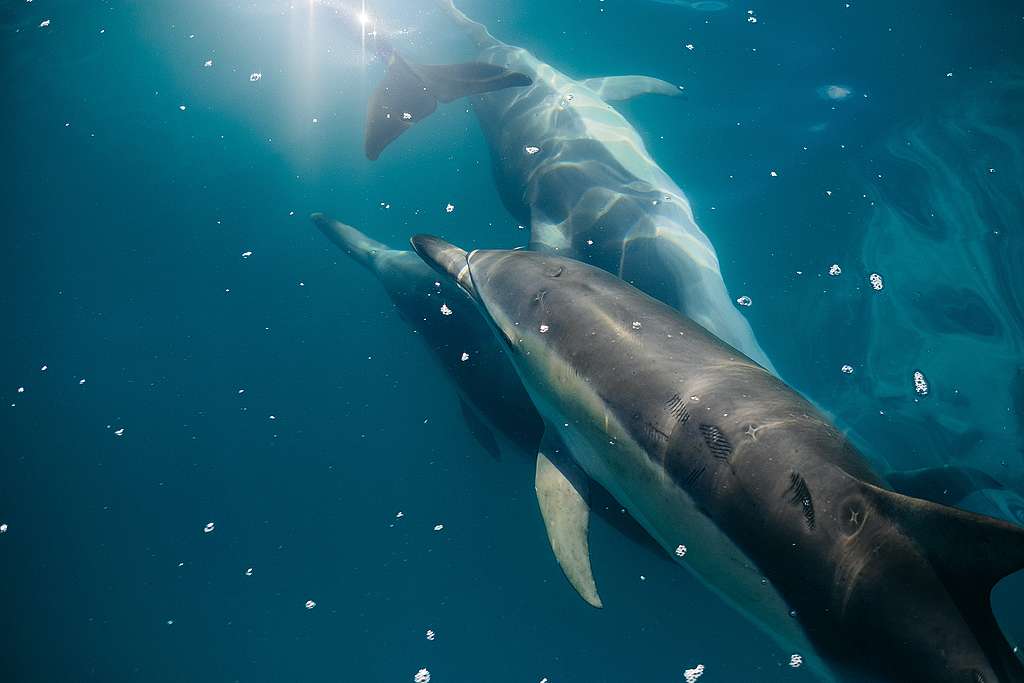Greenpeace says new fishing bycatch data confirms the urgent need to regulate commercial fishing, calling into question continued claims by government and industry that New Zealand is a world leader when it comes to ocean protection.
The data, released by the Ministry for Primary Industries, shows that in a six month period alone commercial fisheries reported pulling up over 9,500 kilograms of coral, sponges and bryozoans – the building blocks of ocean life. The vast majority of coral destruction was caused by trawl based fishing.
Over 400 seabirds were also killed over six months including albatross, crested penguins and hoiho – which are unique to New Zealand. With only 5,000 remaining in the wild, hoiho are one of the most endangered penguin species in the world. Commercial fishing also killed 27 fur seals in the same time period.
“These bycatch figures should give us all great cause for concern”, says Greenpeace oceans campaigner Ellie Hooper.
“They tell a heartbreaking story that runs counter to the continued message we hear from the government and industry that New Zealand is a world leader when it comes to ocean protection, and shows the devastation fishing methods such as bottom trawling cause.
“Disturbingly, these figures are likely to be only a fraction of the real destruction. This bycatch data is all self-reported data and we know, from robust evidence, that bycatch reporting increases significantly when observers or cameras are operating on fishing vessels,” says Hooper.
The data for the 2021-2022 fishing year, the most uptodate full fishing year, paints a similarly sobering picture. Over that timeframe commercial fishing reported killing 956 seabirds, 154 fur seals, seven sea lions and 18 dolphins including 12 common dolphins, 2 dusky dolphins and 2 bottlenose dolphins. There was also over 6,000kg of coral, sponges and bryozoans hauled up in nets.
In the case of the coral, the bycatch figures also don’t take into account coral habitats damaged and killed on the seafloor – only what is physically caught in nets.
“Nobody wants to see a dead, empty ocean, but the reality is that’s the direction we’re headed if commercial fishing is allowed to continue in this way. We need the government to step in and regulate this industry and protect the ocean better – it’s clear that right now not enough is being done to protect ocean life from this threat.
“The government has committed to Te Mana o te Taiao Biodiversity Strategy which includes moving towards a zero bycatch goal. Clearly they have more work to do. New Zealand will not reduce bycatch if the Government doesn’t regulate commercial fishing, including restricting the indiscriminate method of bottom trawling.
“The Minister for Oceans and Fisheries David Parker made speeches earlier this month about the progress that has been made on ocean protection, but the reality is this is not happening fast enough. Too many protected species are dying at the hands of commercial fishing.
“That is why we have continually campaigned for cameras on all commercial fishing boats and for a ban on bottom trawling seamounts and other significant marine features. Seamounts are biodiversity hotspots and they need to be protected.
“Trawl fishing is one of the worst culprits when it comes to bycatch of other species and coral destruction. The bulk of the coral pulled up in this latest data came from the Chatham Rise area which is full of seamounts.
“With the right regulations from the Government now, the ocean can be restored so that it is thriving and bountiful for future generations to enjoy. We urge the government to put action behind their words, and protect the ocean for the future,” says Hooper.

Call on the NZ Govt to commit to implementing cameras on the whole commercial fishing fleet. I want to see a clear plan to meet this deadline and transparent reporting on progress of that plan.
Take Action



